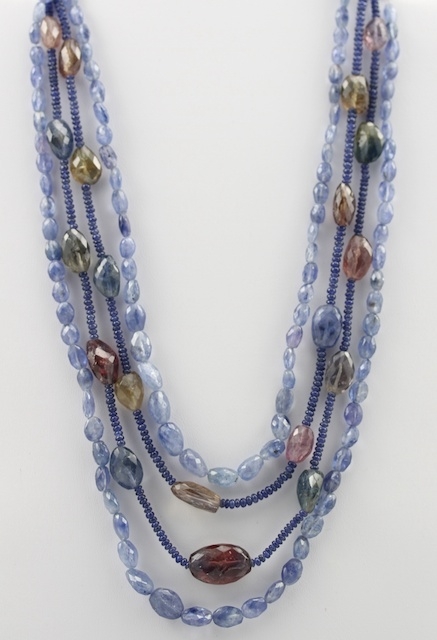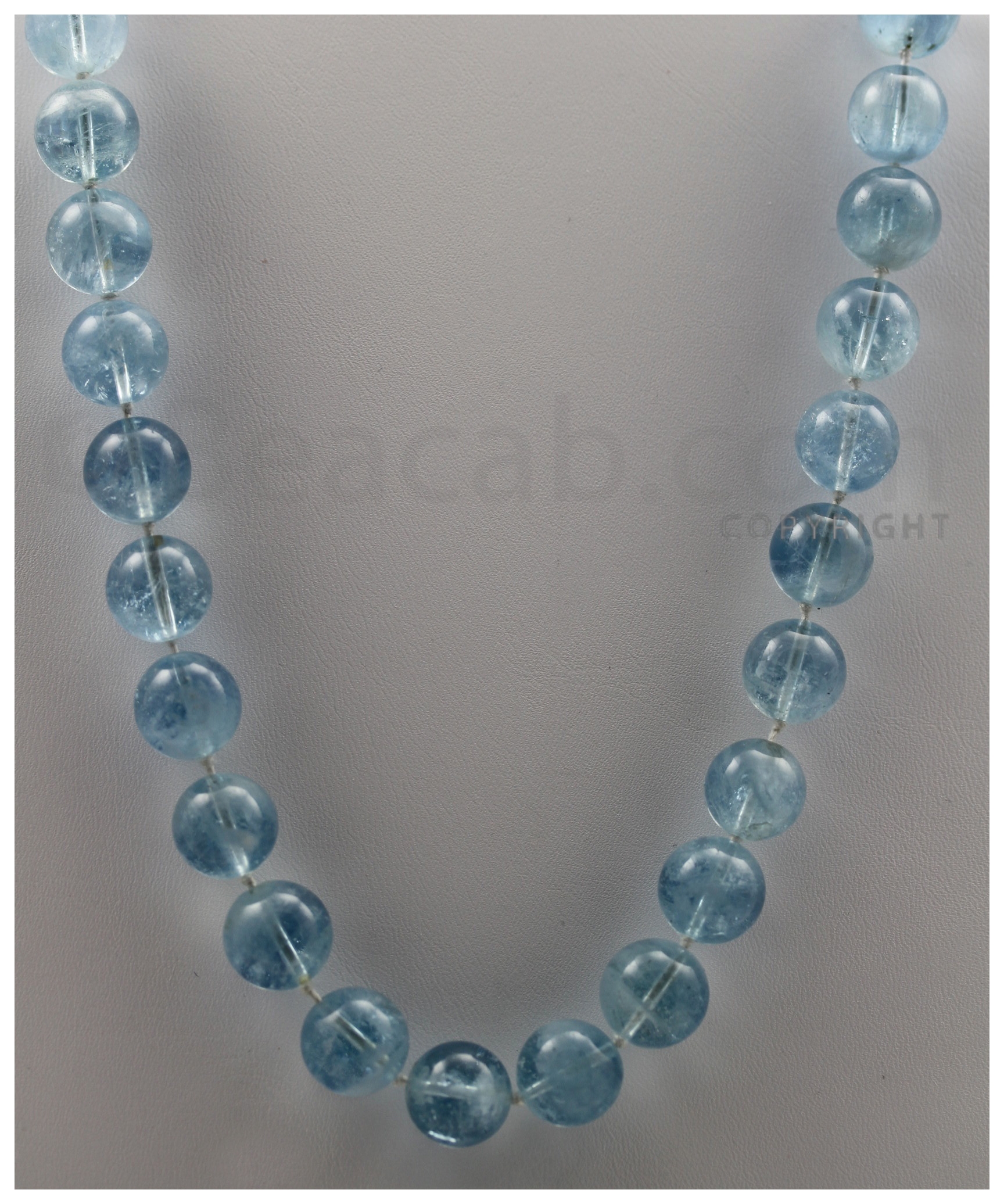The world's most beautiful emeralds are said to be Columbian emeralds. Since large stones of good quality may prove to be rather expensive for the layman, emerald beads are a smart option for those who wish to add this verdant gem to their jewelry collection. In this article we will look at the different kinds of emerald beads, their fashioning, sizes and use.
 Color
Color
As with most colored gemstones the main factor affecting value is color. Famed emerald mines in Columbia- Chivor, Muzo and Cosquez are known for their distinctly colored yields more than anything else. Emeralds from the Chivor mine have a good blue-green color while those mined at Muzo are famed for their yellowish-green color and warm velvety appearance that is much prized amongst gem-collectors.
But no matter what the shade of color; Columbian emeralds are in a class of their own. Although it may prove somewhat difficult to source Columbian emeralds that fit exactly into the color descriptions given above, many good quality stones exist in varying shades of green. Light, transparent varieties and bright, pleasing leaf green colored emeralds make charming additions to any jewelry collection. Deep forest green and a dewy bottle green too are acceptable colors for emerald beads. Commercial websites selling emeralds cut stones and beads may classify color as light, medium and dark green.
Shapes and sizes
Columbian emerald beads are available in several shapes including roundels (beads that are somewhat spherical but with flattened sides where the drill holes pass through), spheres, faceted round or smooth beads, faceted oval or rectangular beads and irregular shaped tumbled beads. Round beads range in size from 6 to 9 mm and are available in strands that range in different length combinations. Stands may measure in at 14 to 19 inches, 15 to 18 inches and may go up to 24 inches. Sugar-loaf cabochons (square shaped stones with a ‘sugar-loaf’ like domed top), oval cabochons and lozenge shaped emerald beads are also popular amongst jewelry designers and gem enthusiasts.
Emerald carvings are stones that are not usually drilled but carved in various fashions. Geometrical designs, floral patterns and traditional motifs are carved onto the stones surface with great care. Carvings can be as small as 6X3 mm in size and go up to 25X23 mm. They can be obtained in multiples and individual pieces may also be sourced.
 Care
Care
Though durable, emeralds have a reputation for being brittle. Cleaning, wearing and storing of emeralds therefore should involve a degree of cautiousness and care. Avoid sudden jolts, sharp taps and extreme changes of temperature to your emerald set jewelry. Always remove rings, earrings and bracelets before using hot appliances, strong detergents and household cleaning liquids. Store your jewelry separately in a proper jewelry box or bureau and segregate each piece with a tissue or cotton wool. Have beaded emeralds restrung at least once every two years and ensure there is a knot between two stones so as to prevent them from rubbing against each other.
Never put emeralds in an ultrasonic jewelry cleaner. Warm water and the mildest detergent you can find along with a soft brush are enough for a regular cleaning. Always dry your jewelry gently after cleaning it.
 Color
ColorAs with most colored gemstones the main factor affecting value is color. Famed emerald mines in Columbia- Chivor, Muzo and Cosquez are known for their distinctly colored yields more than anything else. Emeralds from the Chivor mine have a good blue-green color while those mined at Muzo are famed for their yellowish-green color and warm velvety appearance that is much prized amongst gem-collectors.
But no matter what the shade of color; Columbian emeralds are in a class of their own. Although it may prove somewhat difficult to source Columbian emeralds that fit exactly into the color descriptions given above, many good quality stones exist in varying shades of green. Light, transparent varieties and bright, pleasing leaf green colored emeralds make charming additions to any jewelry collection. Deep forest green and a dewy bottle green too are acceptable colors for emerald beads. Commercial websites selling emeralds cut stones and beads may classify color as light, medium and dark green.
Shapes and sizes
Columbian emerald beads are available in several shapes including roundels (beads that are somewhat spherical but with flattened sides where the drill holes pass through), spheres, faceted round or smooth beads, faceted oval or rectangular beads and irregular shaped tumbled beads. Round beads range in size from 6 to 9 mm and are available in strands that range in different length combinations. Stands may measure in at 14 to 19 inches, 15 to 18 inches and may go up to 24 inches. Sugar-loaf cabochons (square shaped stones with a ‘sugar-loaf’ like domed top), oval cabochons and lozenge shaped emerald beads are also popular amongst jewelry designers and gem enthusiasts.
Emerald carvings are stones that are not usually drilled but carved in various fashions. Geometrical designs, floral patterns and traditional motifs are carved onto the stones surface with great care. Carvings can be as small as 6X3 mm in size and go up to 25X23 mm. They can be obtained in multiples and individual pieces may also be sourced.
 Care
CareThough durable, emeralds have a reputation for being brittle. Cleaning, wearing and storing of emeralds therefore should involve a degree of cautiousness and care. Avoid sudden jolts, sharp taps and extreme changes of temperature to your emerald set jewelry. Always remove rings, earrings and bracelets before using hot appliances, strong detergents and household cleaning liquids. Store your jewelry separately in a proper jewelry box or bureau and segregate each piece with a tissue or cotton wool. Have beaded emeralds restrung at least once every two years and ensure there is a knot between two stones so as to prevent them from rubbing against each other.
Never put emeralds in an ultrasonic jewelry cleaner. Warm water and the mildest detergent you can find along with a soft brush are enough for a regular cleaning. Always dry your jewelry gently after cleaning it.
67GWYSTW5NMR





 Blue sapphire Beads: Sapphire is the natal stone for the month of September and is believed to safeguard the wearer from envy and attract divine favors. It is also one of the hardest gem materials after diamond and can be used in articles of daily wear without any worries of chipping or breakage. The ideal color for sapphire is a deep clear blue. Articles like rings set with a single faceted stone or bracelets made with blue sapphire beads can be worn without fear of them getting damaged with constant use. The gem is readily available in the market with gemstone dealers and
Blue sapphire Beads: Sapphire is the natal stone for the month of September and is believed to safeguard the wearer from envy and attract divine favors. It is also one of the hardest gem materials after diamond and can be used in articles of daily wear without any worries of chipping or breakage. The ideal color for sapphire is a deep clear blue. Articles like rings set with a single faceted stone or bracelets made with blue sapphire beads can be worn without fear of them getting damaged with constant use. The gem is readily available in the market with gemstone dealers and  Aquamarine Beads: Belonging to the same gem family as emerald- beryl, aquamarine is a blue-green stone that is often found in large clear crystals. Aquamarine ranges from blue-green to a light sky blue in color. It is gem that is relatively abundant. It is the birthstone for March and a gift of Aquamarine is said to signify safety and security for long standing relationships. It is even believed to revive the love in a tired marriage making it an ideal anniversary gift for many!
Aquamarine Beads: Belonging to the same gem family as emerald- beryl, aquamarine is a blue-green stone that is often found in large clear crystals. Aquamarine ranges from blue-green to a light sky blue in color. It is gem that is relatively abundant. It is the birthstone for March and a gift of Aquamarine is said to signify safety and security for long standing relationships. It is even believed to revive the love in a tired marriage making it an ideal anniversary gift for many!  Tanzanite Beads: Tanzanite is a fairly recent discovery in the gem world and is found in just one locality in the world- Tanzania. Its deep royal blue color tinged with violet makes it highly desirable. TanzaniteOne is a commercial player in the tanzanite market and has introduced its own grading system. The system's color-grading scales divide tanzanite colors into a range of hues, between blue violet and violet blue.
Tanzanite Beads: Tanzanite is a fairly recent discovery in the gem world and is found in just one locality in the world- Tanzania. Its deep royal blue color tinged with violet makes it highly desirable. TanzaniteOne is a commercial player in the tanzanite market and has introduced its own grading system. The system's color-grading scales divide tanzanite colors into a range of hues, between blue violet and violet blue.  Turquoise Beads: Turquoise is a blue to greenish blue opaque gem largely known for its popularity in ancient Egyptian and Aztec cultures. Although somewhat soft, turquoise takes a good polish and is polished cabochons are set in rings, earrings and pendants.
Turquoise Beads: Turquoise is a blue to greenish blue opaque gem largely known for its popularity in ancient Egyptian and Aztec cultures. Although somewhat soft, turquoise takes a good polish and is polished cabochons are set in rings, earrings and pendants. 

